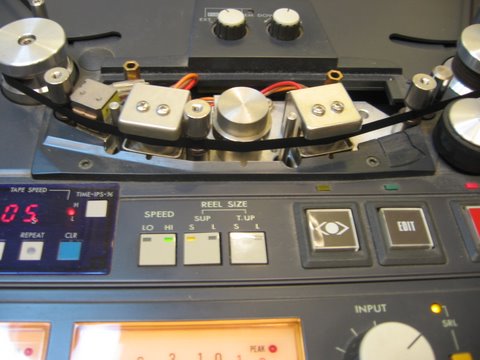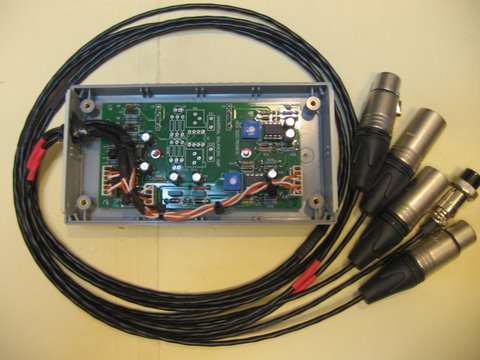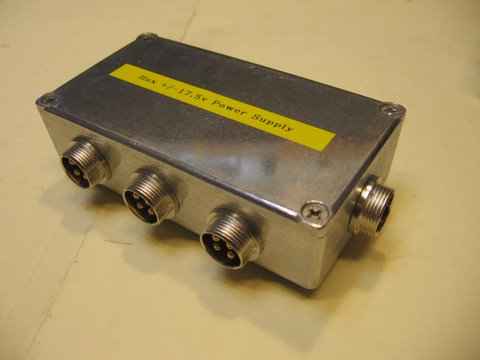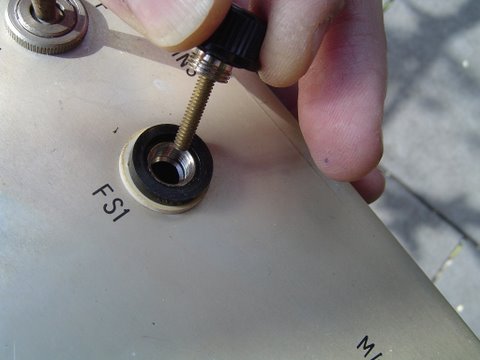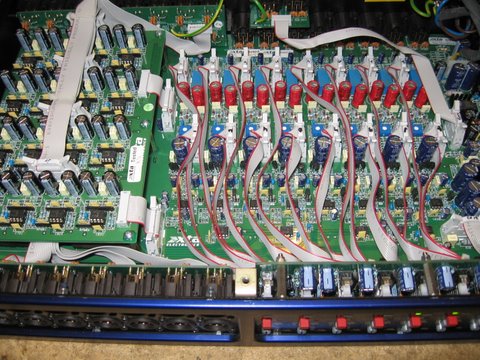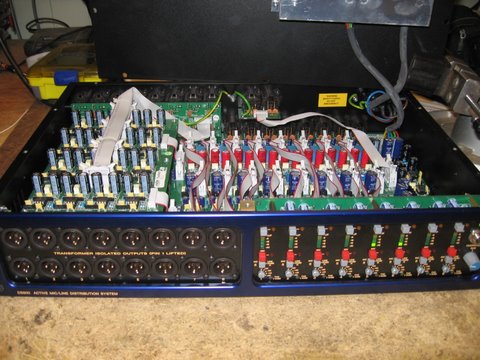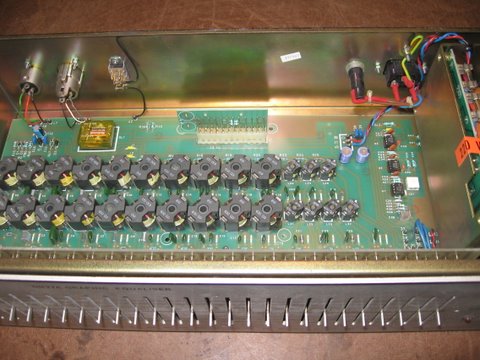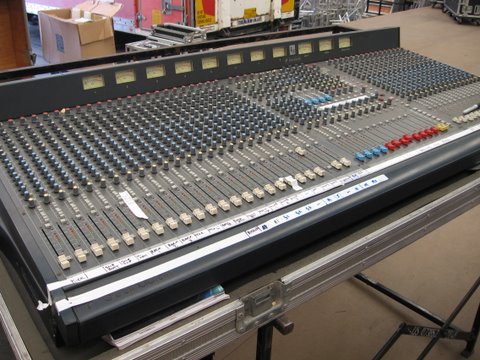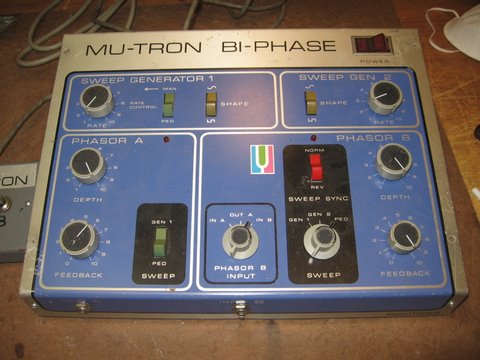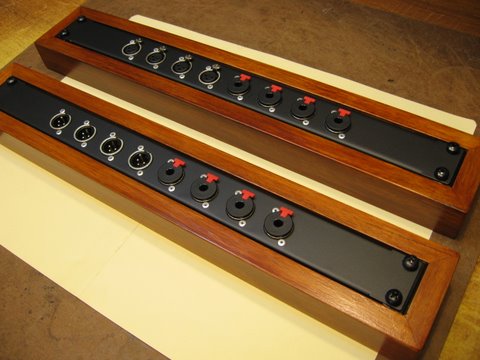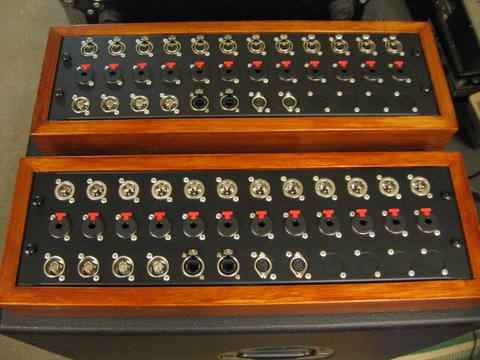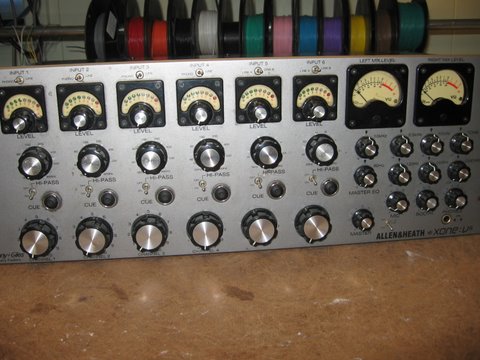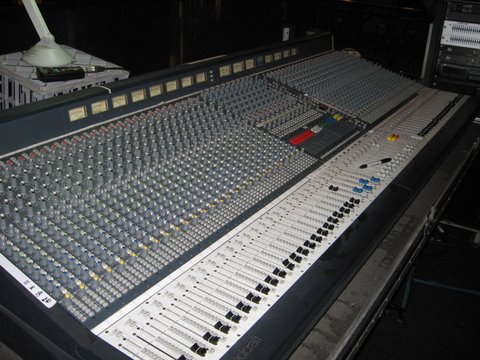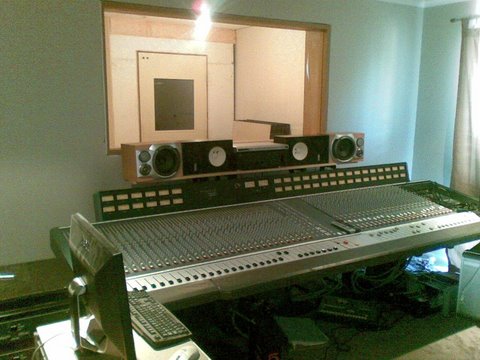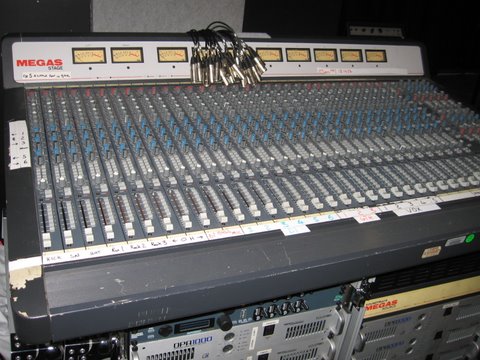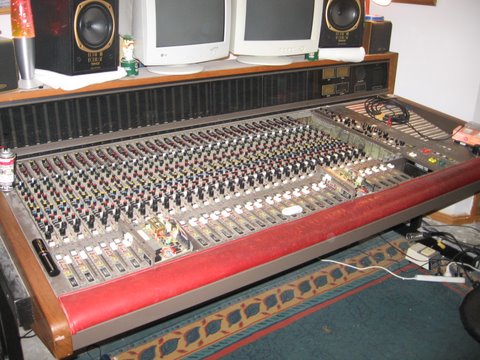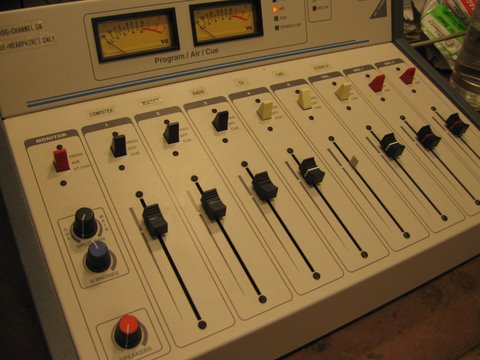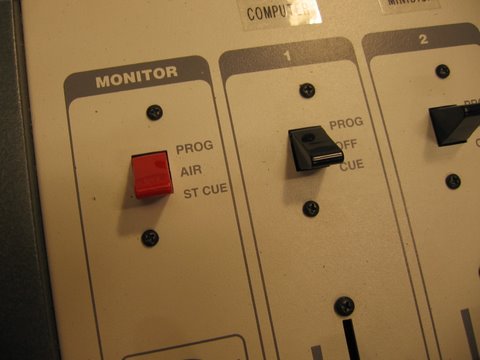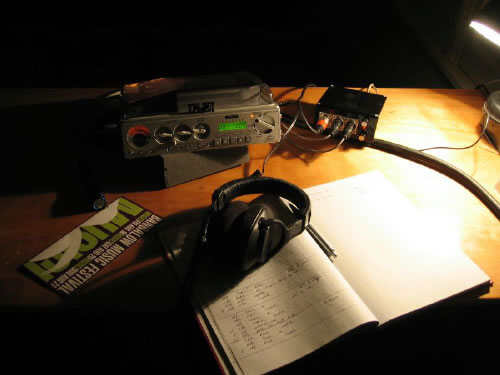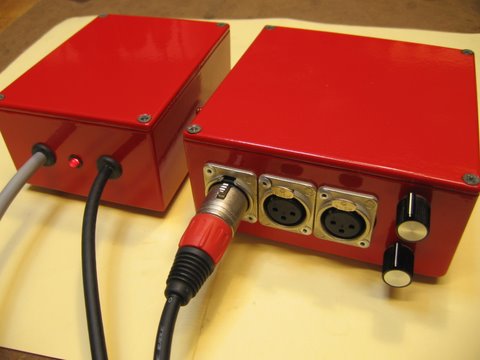Hux Electronics : Gallery 9
An Otari MX-55, I had not worked on one of these before now and had not realized what a nice solid machine they are.
One of nine Hux custom balanced in to balanced out buffer amplifiers that I built for a client. The specification called for high headroom, the ability to drive unbalanced loads without level loss and the ability to drive 600 ohm loads without level loss.
A Hux custom power supply designed for use with the above balanced in to balanced out buffer amplifier. The unit enables a simple 17 volt AC wall wart power supply to create a +/- 17.5 volt DC output and drive up to three buffer amplifiers (or other electronics).
A colleague of mine found this brass screw acting as a fuse inside an audio product that he was repairing. It should be obvious that this is a very dangerous practice, unfortunately some folks don't seem to understand that a fuse is there for a very good reason and they don't usually blow without cause.
An XTA Electronics DS-800 active microphone distribution system (a mic splitter), this thing is loom city, repaired by Hux
A frontal view of the XTA DS-800
A Klark Teknik DN27A mono graphic equaliser, this is a fairly old inductor based design and is probably fashionably funky again.
A Soundcraft K2 live mixing console, owned by IJS NSW, this console came up quite well after a bit of work, repaired by Hux
A Musitronics "Mu-Tron Bi-Phase" owned by a client, a very wacky dual channel phaser device that seems to have earned much respect from those in the know, repaired by Hux
A couple of very nice 1Ru wooden patchbay frames, designed and made by Hux, these have a low profile and are designed and intended to be wall mounted.
A couple of nice 3Ru wooden (Tasmanian Oak) patchbay frames, designed and built by Hux, these were made deeper to enable them to be used as fancy stage boxes.
An Allen & Heath Xone V-6 DJ mixer, an unusual and strange box of goodies, it includes Penny & Giles rotary faders and a couple of valve equipped channels, repaired by Hux.
A Soundcraft Series Five mixing console owned by Johnston Audio Services and installed with the in-house PA system at The Tivoli Theater in Brisbane, repaired by Hux.
A Soundcraft 3200 split format recording console, this was Soundcraft's largest and most exotic "split" console before the concept of the "in-line" recording console came in to being, this is a physically large beast and runs on five power supplies, this console is located in a home based studio, repaired by Hux.
A Soundtracs "Megas" mixing console being used as a foldback console at Southbank Institute Of Technology, repaired and modified by Hux, an internal "star earth" system was fitted to cure the interment issues.
An MCI JH-600 recording console at a private home studio, an unusual and mighty beast.
A McCubbin MBC-8 broadcast console, these were designed and built for use with BRACS (Broadcast for Remote Aboriginal Community Scheme) radio studios, this console was released on the market in 1994. Most of these consoles have LED metering to make them more robust for bush use, this particular console has VU meters and I have not seen one with this option before, repaired by Hux.
A close up of the monitor section of the above McCubbin MBC-8 broadcast console, I claim the credit for inventing the "stereo cue" function that this console features. Most broadcast consoles switch into "split" mono headphone monitoring when an input channel is switched to "cue" with "program" in one ear and "cue" in the other ear. On this console when the monitor switch is set to "ST CUE" the headphone monitoring is normally "PROG", if a channel "cue" switch is activated the headphone monitoring will automatically switch to "stereo cue". This handy function means that any input channel can act as a 2 track monitor channel during recording or cueing. As far as I know this feature does not exist on other broadcast consoles, I came up with this concept in 1992 and McCubbin picked it up as a good idea and built it into this console in 1994, a very small claim to fame but a claim to fame it is.
In 1999 I built a small but very high quality dual channel microphone pre-amp for David Spearritt of Lodestar Recordings. This unit features simplicity, a short signal path, a built in MS matrix, switched input gains and an overbuilt external power supply. This pre-amp has been a favorite of David's for the past ten years and is affectionately known as the "Hux Box" (pictured top right).
The Hux Box reborn. In 2009 and about ten years after it was originally built the Hux Box mic pre-amp was sent in for a paint job refreshment. I striped the unit down, had the case sandblasted and powdercoated in "signal red", reassembled and tested it, it all came up 100%. This little unit does a lot of serious classical recording work and it has so far never missed a beat on the job. Good old robust case work combined with good old minimalist and solid design, you cant beat it for reliability and performance.
